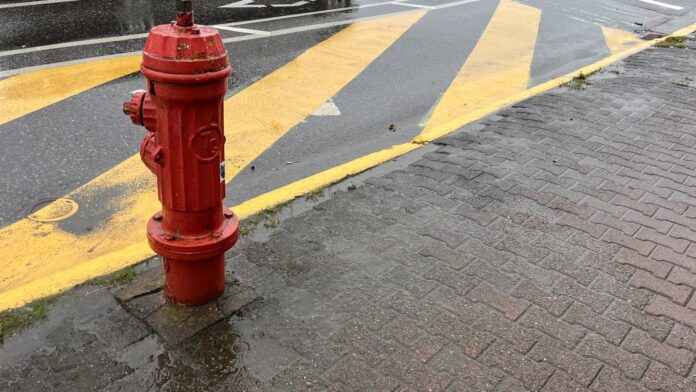New hydrants were installed along Gold Street in Kitimat, part of a project to improve water quality in the neighbourhood. The upgrades were necessary to address aging infrastructure that had made it difficult to maintain the water mains in the area.
Alex Ramos-Espinoza, director of engineering services for the District of Kitimat, said the new hydrants were put in to allow crews to perform a process called pigging. Pigging involved sending a device, known in the industry as a “pig”, through a water main to scrape out and flush away built-up sediment. He said the condition of the system meant crews needed a way to clear out the lines and restore them closer to their original state.
“The purpose of installing the hydrants was to complete what’s called the pigging process, where we run a pig through the main to clean it up. The whole project was done to improve the water quality in the area by removing sediment and buildup from the last 60 years.”
Some residents had also raised concerns about fire protection, but Ramos-Espinoza said that wasn’t the main purpose of this project. Instead, the hydrants were designed to make ongoing maintenance possible, something that hadn’t been feasible with the previous infrastructure.
“The hydrants were significant for us to do this process. Previous hydrants made it nearly impossible to run a pig and clean the mains, but the new ones allow us to do the maintenance and keep fire flow capacity the same.”
He added that while the pigging process was already helping, it wasn’t a permanent fix. Crews would need to continue regular flushing and may need to repeat the process to keep water quality consistent.
“This is an ongoing maintenance process that we need to keep doing to make sure the water quality is maintained. We do yearly flushing of all the systems and will evaluate whether more pigging is needed.”
At the same time, the District was moving ahead with major long-term investments to improve water infrastructure across Kitimat. Ramos-Espinoza said those upgrades included a new water treatment facility and an asset management plan to address aging water mains.
“The first thing we’re doing is installing a new water treatment plant, and that will deal with ongoing issues around turbidity and water quality advisories. Council approved this project, which is over $24 million and currently under construction.”
For now, Gold Street residents may notice some improvements in water quality, while bigger changes are expected when the new treatment plant comes online next year.






